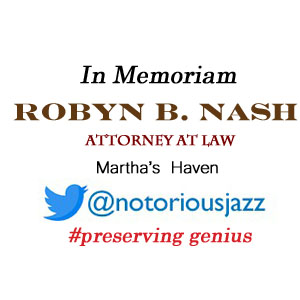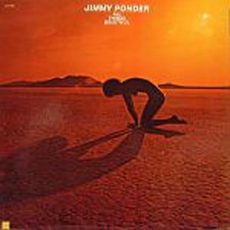
Daily Dose Of Jazz…
Barron W. “Barry” Rogers was born on May 22, 1935 in The Bronx, New York descended from Polish Jews whose name was originally Rogenstein, and was raised in Spanish Harlem. His father and several of his uncles sang in a choir and his mother taught in Africa and Mexico, inspiring an interest in music from other nations. Mambo and jazz were popular in his neighborhood.
As a student of jazz trombonists Jack Teagarden, Lawrence Brown, and J. C. Higginbotham’s playing, he began performing Latin music in the mid-1950s and would be most associated with it from then on. He developed his style while working with Eddie Palmieri, and Willie Colón regarded Rogers as his strongest musical influence and would feature him in many of his productions. Bobby Valentín would feature Rogers in his song El Jíbaro y la Naturaleza, which led Marvin Santiago to nickname him El Terror de los Trombones for the record.
Rogers worked with Israel “Cachao” López, Machito, Manny Oquendo, Celia Cruz, Tito Puente, Cheo Feliciano, Johnny Pacheco, Chino Rodríguez, and the Fania All-Stars. He was a founding member of the band Dreams with Michael Brecker, Randy Brecker, and Billy Cobham. He also worked with George Benson, David Byrne, Ron Carter, Aretha Franklin, Don Grolnick, Bob James, Elton John, Chaka Khan, Bob Moses, Todd Rundgren, Carly Simon, Spyro Gyra, James Taylor, Jimmy Ponder and Grover Washington Jr. as well as others too numerous to name in pop, r&b and rock genres.
Trombonist Barry Rogers, who performed in the jazz and salsa mediums, died suddenly in Washington Heights, Manhattan at the age of 55 on April 18, 1991.
More Posts: history,instrumental,jazz,music,trombone
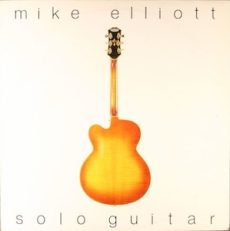
Daily Dose Of Jazz…
Mike Elliott was born on May 18, 1940 in Chicago, Illinois to a studio musician father and a blues singer mother. Raised in Colorado he learned guitar at a young age and was playing professionally by the time he was sixteen. It was in Colorado where he studied guitar with Johnny Smith.
He formed his first jazz group and in 1964 was on the road. He moved to Minneapolis, Minnesota two years later, and in the Seventies he helped found the jazz fusion group Natural Life, which included saxophonist Bob Rockwell, bassist Billy Peterson, pianist Bobby Peterson, and drummers Bill Berg and Eric Kamau Gravatt.
The 1980s saw him moving to Nashville, Tennessee and becoming manager of Gibson Professional Musical Services and holding clinics with Les Paul, Howard Roberts, and Elliot Easton. Mike did session work, engineering, producing, arranging, and songwriting. In the middle of the decade he teamed up with songwriter musician Jim Pasquale to form Magic Tracks Recording Studio.
Remaining in Nashville until 1998 he worked with Johnny Cash, Mickey Newbury, Chubby Checker, Emmylou Harris, Trisha Yearwood, Joe Diffie, Earl Klugh, Vic Damone, Steve Earle, Crystal Gayle, and Tennessee Ernie Ford.
Gruitarist Mike Elliott died on September 14, 2005. A Mike Elliott Scholarship Award for excellence in guitar was established in his honor.
More Posts: bandleader,guitar,history,instrumental,jazz,music
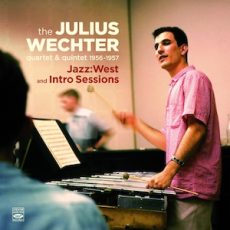
Daily Dose Of Jazz…
Julius Wechter was born on May 10, 1935 in Chicago, Illinois and studied and learned to play the vibraphone and percussion, which he did with the Martin Denny group by the time he was out of highschool in the 1950s. The early Sixties saw him moving to movie soundtracks, television and session work for the Beach Boys, the Monkees, Sonny & Cher, and various Phil Spector productions.
His long and successful association with Herb Alpert and his Tijuana Brass started when he played percussion on their first hit, The Lonely Bull in 1962. He later composed Spanish Flea. He went on to play marimba and vibes on many of Alpert’s songs in the 1960s, as well as writing at least one song on most of those albums.
Encouraged by Alpert, he formed the Baja Marimba Band which was quite successful, hitting four chart songs in Billboard’s Top 100, and numerous on its Easy Listening Top 40. Disbanding in the mid Seventies, Julius turned his attention to television and movies again, but continued to play with Alpert.
In his later years, he devoted himself to psychology, earned a master’s degree, and served as vice president of the Southern California chapter of the Tourette Syndrome Association.
Marimba and vibraphonist Julius Wechter died on February 1, 1999 at his home in California of lung cancer, at the age of 63, a day after his song Spanish Flea was used in The Simpsons episode Sunday, Cruddy Sunday.
More Posts: bandleader,history,instrumental,jazz,marimba,music,vibraphone
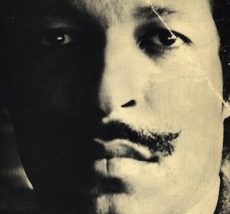
Jazz Poems
GYRE’S GALAX
Sound variegated through beneath lit
Sound variegated through beneath lit through sound beneath variegated lit sound variegated through beneath litVariegated sound through beneath lit dark
Variegated sound through beneath lit dark sound variegated through beneath lit variegated sound through beneath lit darkThrough variegated beneath sound lit
Through variegated beneath sound lit through variegated beneath sound lit through variegated beneath sound lit Through variegated beneath sound lit Through variegated beneath sound lit through beneath lit through beneath lit through beneath lit through beneath lit Thru beneath Thru beneath Thru beneath through beneath lit Thru beneath through beneath lit Thru beneath through beneath lit Thru beneath Thru beneath through beneath lit Thru beneath Thru beneath through beneath lit Thru beneath Thru beneath Thru beneath Thru beneath Thru beneath Thru beneath Thru beneath Through beneath litTwainly simple of amongst
twainly simple of amongst Twainly simple of amongst twainly simple of amongst Twainly simple of amongst twainly simple of amongst In lit black viewly viewly viewly in viewly viewly viewly in viewly viewly in viewly viewly in viewly viewly viewly viewly in viewly viewly In lit black viewly in dark to stark In dark to stark In dark to stark in dark to stark In dark to stark in dark to stark In dark to stark In above beneath In above beneath In above beneath above beneath lit above beneath above beneath above beneath above beneath lit above beneath above beneath lit above beneath above beneath lit above beneath above beneath lit above beneath above beneath above beneath above beneath above beneath lit above beneath above beneath above beneath lit above beneath above beneath above beneath above beneath above beneath above beneath above beneath above beneath above beneath litN. H. PRITCHARD
from Jazz Poems ~ Selected and Edited by Kevin Young
More Posts: book,classic,collectible,history,jazz,library,poet

Daily Dose Of Jazz…
Patrick Earl Rebillot was born on April 21, 1935 in Louisville, Ohio and studied music at Mt. Union College and the Cincinnati Conservatory of Music with Jeno Takacs. He graduated with a Bachelor of Music Education in 1957.
A long-time member of Herbie Mann’s various line-ups and credited as arranger, Pat appears on recordings by David Newman, Jon Faddis, Flora Purim, Michael Franks, Freddy Cole, Patti Austin and Chris Connor as well as Steely Dan, the Average White Band, Gloria Gaynor, Irene Worth, Bette Midler, Hall & Oates, Morrissey–Mullen, Barbra Streisand, Judy Collins, Carly Simon, The Spinners, and Laura Lieberman.
Rebillot has played live with Sarah Vaughan, Joe Williams, Anita O’Day, Benny Powell, Jimmy Rushing, Zoot Sims, Al Cohn, James Moody, Thad Jones, Mel Lewis, Benny Goodman, Gary Burton, Paul Winter, Joan Baez, Liza Minnelli, Cissy Houston, O.C. Smith, and others.
Rebillot is associated with fellow session and studio musicians Hugh McCracken, Tony Levin, Steve Gadd, Ray Barretto and Ralph MacDonald.
Pianist and composer Pat Rebillot performs occasionally at the age of 90.



